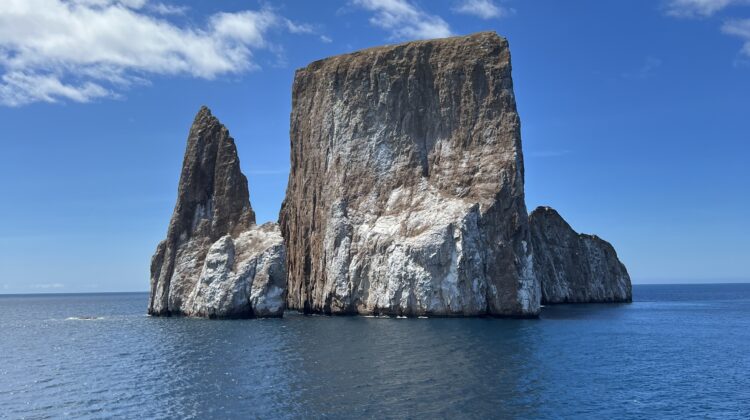
Ai Galapagos
The Impact of AI Galapagos on Conservation Efforts
The Galapagos Islands, located in the Pacific Ocean, are renowned for their unique and diverse ecosystem. These islands are home to a wide variety of plant and animal species, many of which are found nowhere else on Earth. However, the delicate balance of this ecosystem is constantly under threat from human activities and climate change. In recent years, scientists and conservationists have turned to artificial intelligence (AI) to aid in their efforts to protect and preserve the Galapagos.
AI Galapagos is a project that aims to use AI technology to monitor and manage the conservation efforts in the Galapagos Islands. By harnessing the power of machine learning and computer vision, researchers are able to analyze vast amounts of data and gain valuable insights into the state of the ecosystem. This technology allows them to detect and track changes in the environment, identify endangered species, and monitor the impact of human activities on the islands.
One of the key applications of AI Galapagos is in the field of wildlife monitoring. Traditional methods of tracking and studying animal populations can be time-consuming and labor-intensive. With AI, researchers can now use drones equipped with cameras to capture high-resolution images of the islands. These images are then analyzed using computer vision algorithms to identify and count different species. This data provides valuable information about population sizes, migration patterns, and habitat preferences, which can help inform conservation strategies.
Another area where AI Galapagos is making a significant impact is in the detection of invasive species. Invasive species pose a major threat to the native flora and fauna of the Galapagos Islands. They can outcompete native species for resources, disrupt the natural balance of the ecosystem, and even drive some species to extinction. AI technology can help identify and track invasive species by analyzing satellite imagery and detecting changes in vegetation patterns. This early detection allows conservationists to take swift action to prevent the spread of invasive species and protect the native biodiversity of the islands.
Climate change is another pressing issue that the Galapagos Islands face. Rising sea temperatures, ocean acidification, and extreme weather events all have a profound impact on the delicate ecosystems of the islands. AI Galapagos is helping scientists understand and mitigate the effects of climate change by analyzing historical climate data and predicting future trends. This information is crucial for developing effective conservation strategies and adapting to the changing environment.
In addition to its applications in wildlife monitoring, invasive species detection, and climate change research, AI Galapagos is also being used to educate and engage the public. Virtual reality experiences and interactive apps allow visitors to explore the islands and learn about the unique species that call them home. This immersive technology not only raises awareness about the importance of conservation but also fosters a sense of connection and responsibility towards the Galapagos Islands.
In conclusion, AI Galapagos is revolutionizing conservation efforts in the Galapagos Islands. By harnessing the power of AI technology, researchers and conservationists are able to monitor and manage the delicate ecosystem more effectively. From wildlife monitoring to invasive species detection and climate change research, AI Galapagos is providing valuable insights and tools to protect and preserve the unique biodiversity of the islands. With continued advancements in AI technology, the future looks promising for the conservation of the Galapagos Islands.
Exploring the Potential of AI Galapagos in Ecological Research
The Galapagos Islands, located in the Pacific Ocean, are renowned for their unique and diverse ecosystems. These islands have long been a source of fascination for scientists and researchers, who have sought to understand the complex interactions between the various species that inhabit this remote archipelago. In recent years, there has been growing interest in the potential of artificial intelligence (AI) to aid in ecological research in the Galapagos.
AI, a branch of computer science that focuses on the development of intelligent machines, has the ability to analyze vast amounts of data and identify patterns that may not be immediately apparent to human researchers. This has led to the development of AI Galapagos, a project that aims to harness the power of AI to better understand and protect the unique ecosystems of the Galapagos Islands.
One of the key areas where AI Galapagos has shown promise is in the field of species identification. The Galapagos Islands are home to a wide variety of plant and animal species, many of which are found nowhere else on Earth. Traditional methods of species identification can be time-consuming and labor-intensive, requiring experts to manually examine specimens and compare them to existing records. AI Galapagos, on the other hand, can quickly analyze images and identify species with a high degree of accuracy. This not only saves time and resources but also allows researchers to gather data on a larger scale, providing a more comprehensive understanding of the biodiversity of the islands.
Another area where AI Galapagos has the potential to make a significant impact is in the monitoring of invasive species. Invasive species, such as rats and goats, pose a major threat to the delicate ecosystems of the Galapagos Islands. These species can disrupt the natural balance, outcompeting native species for resources and causing irreparable damage to the fragile ecosystems. AI Galapagos can help in the early detection and monitoring of invasive species by analyzing satellite imagery and identifying areas where these species are present. This allows for targeted and efficient eradication efforts, minimizing the impact on native species and ecosystems.
Furthermore, AI Galapagos can also aid in the prediction and mitigation of the effects of climate change on the Galapagos Islands. Climate change is already having a significant impact on the islands, with rising sea levels and increasing temperatures threatening the survival of many species. By analyzing historical data and climate models, AI Galapagos can help researchers understand how these changes will affect the islands’ ecosystems and develop strategies to mitigate their impact. This can include identifying areas that are most vulnerable to climate change and implementing measures to protect them, such as creating marine protected areas or implementing conservation programs.
In conclusion, AI Galapagos has the potential to revolutionize ecological research in the Galapagos Islands. By harnessing the power of artificial intelligence, researchers can gather and analyze data on a scale that was previously unimaginable. This not only allows for a more comprehensive understanding of the unique ecosystems of the islands but also provides valuable insights into how to protect and preserve them for future generations. As technology continues to advance, it is likely that AI Galapagos will play an increasingly important role in ecological research, helping to ensure the long-term survival of the Galapagos Islands’ extraordinary biodiversity.


